Capuchina. Haiku #8.
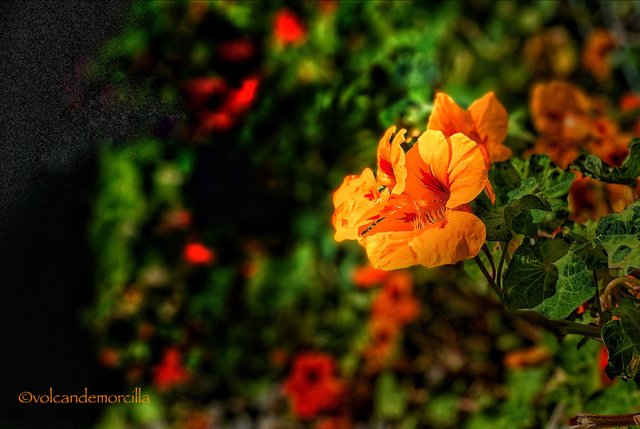

Flores distintas,
naranjas y limones.
Trepa salvaje.

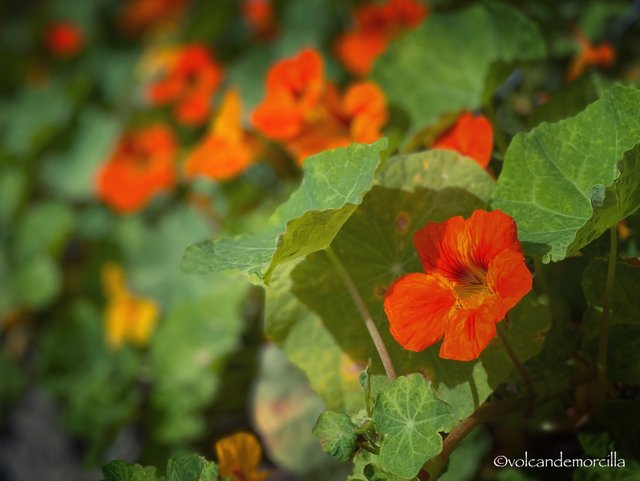

Different flowers,
oranges and lemons.
Wild climbing.

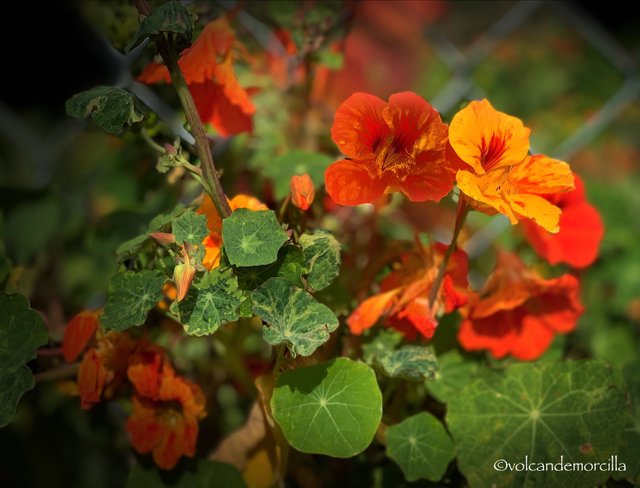

La Capuchina.
La Capuchina fue traída desde el altiplano andino de Sudamérica por los jesuitas en el siglo XIV. Fue cultivada en jardines botánicos con el fin de poder disfrutar de ella en los jardines por sus bonitos y variados colores que tienen sus flores. Con ella se conforman bonitas enredaderas.
Las flores se caracterizan porque tienen cinco pétalos desiguales. Dentro de una misma planta, varian los colores de las flores. En general oscilan entre el amarillo y naranja casi rojo. Hay flores amarillas con manchas rojas.
Esta planta vive salvaje en algunos lugares de Tenerife. En ocasiones, cubre algunas grandes superficies de terreno. En Bolivia se utiliza también como producto gastronómico porque sus hojas y flores tienen un ligero sabor picante. Se emplean en ensaladas principalmente. En los cultivos y jardines ecológicos tienen también un uso como repelente natural de insectos.

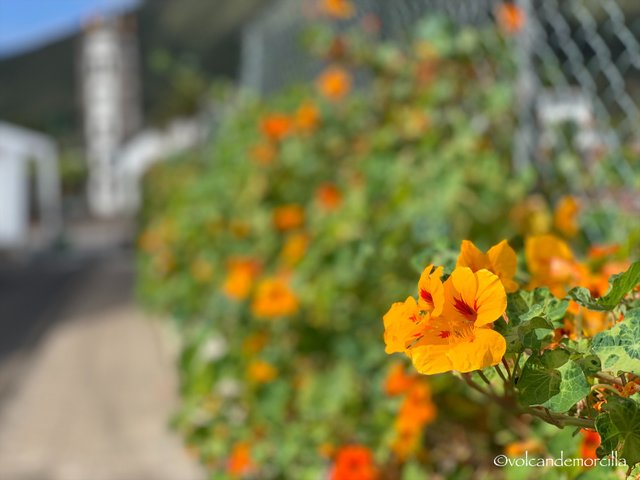
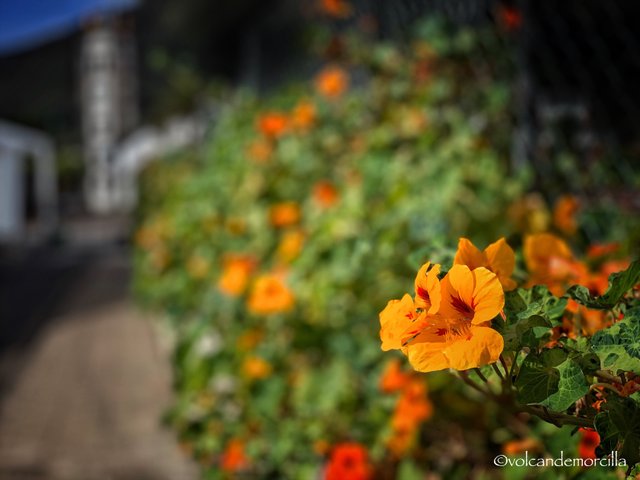
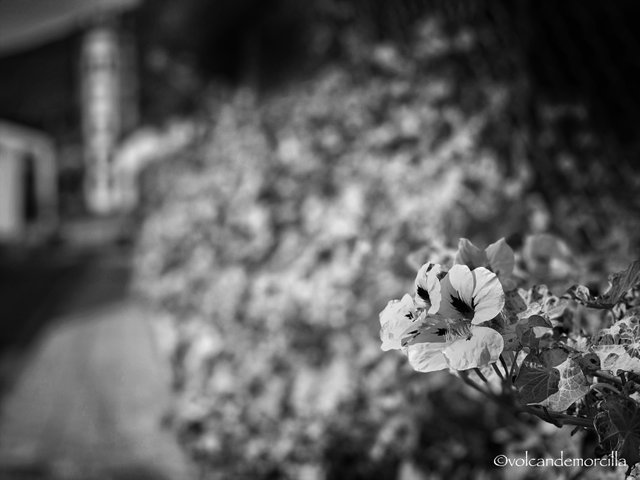

The Capuchin
The Capuchin was brought from the Andean highlands of South America by the Jesuits in the fourteenth century. It was cultivated in botanical gardens in order to enjoy it in the gardens for its beautiful and varied colors that have their flowers. With it beautiful vines are formed.
The flowers are characterized because they have five unequal petals. Within the same plant, the colors of the flowers vary. In general, they oscillate between yellow and almost red orange. There are yellow flowers with red spots.
This plant lives wild in some places of Tenerife. Occasionally, it covers some large areas of land. In Bolivia it is also used as a gastronomic product because its leaves and flowers have a slightly spicy flavor. They are used in salads mainly. In crops and ecological gardens they also have a use as a natural insect repellent.

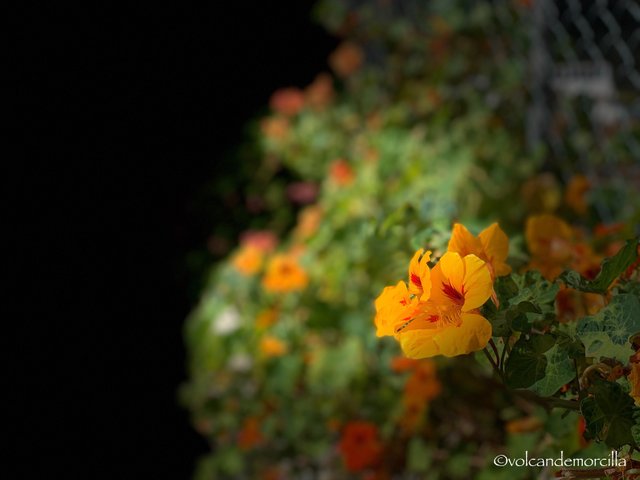
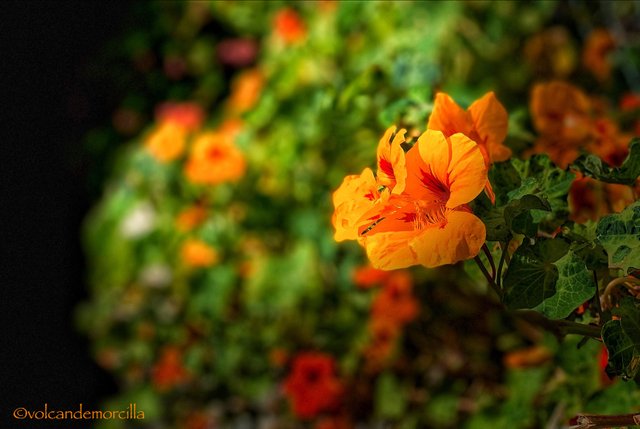
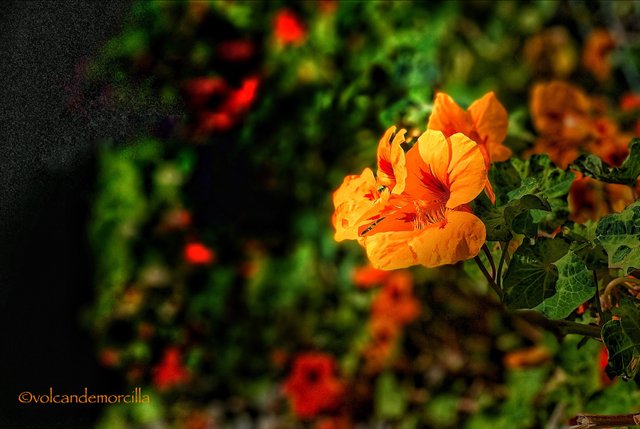
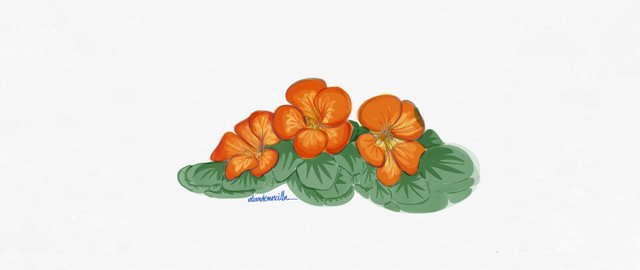
El haiku
El haiku es un tipo de poesía muy antigua que tiene su origen en el Japón tradicional.
Exige un importante ejercicio de síntesis puesto que consiste un breve poema que se escribe sólo con tres versos de cinco, siete y cinco sílabas,
La temática del haiku suele ser el asombro que origina en el poeta la contemplación de la naturaleza y la emoción que en él produce.
Los expertos en hacer buenos haikus indican que el tiempo y el espacio en el que desarrolla el poema deben ser siempre el "aquí” y el “ahora".
Los haikus se deben leer con detenimiento, lentamente, sintiendo y disfrutando las palabras, con todos los sentidos abiertos para poder captar todo su sabor.
Una idea muy interesante y difícil de conseguir es escribir el haiku en base a dos ideas que el poeta relaciona entre si.
Los haikus son composiciones visuales, descripciones concisas, fotográficas. Se proponen evocar emociones y sentimientos. Nuestra mente debe añadir y aportar lo que el breve texto sugiere. Si dedicas algo de tiempo a imaginar las escenas que sugieren los haikus, los apreciarás mucho más.

The haiku
Haiku is a very old type of poetry that has its origin in traditional Japan.
It requires an important exercise of synthesis since it consists of a short poem that is written only with three verses of five, seven and five syllables,
The theme of haiku is usually the amazement that originates in the poet the contemplation of nature and the emotion that it produces.
The experts in making good haikus indicate that the time and space in which the poem develops should always be the "here" and the "now."
The haikus should be read carefully, slowly, feeling and enjoying the words, with all the senses open to capture all its flavor.
A very interesting and difficult to achieve idea is to write the haiku in base to two ideas that the poet relates to each other
Haikus are visual compositions, concise, photographic descriptions. They propose to evoke emotions and feelings. Our mind must add and contribute what the short text suggests. If you spend some time imagining the scenes suggested by the haikus, you will appreciate them much more.

Si queréis ver mis anteriores y primeros Haikus, de este reto personal en steemit, aquí os dejo los enlaces:
< If you want to see my previous and first Haikus, this personal challenge in steemit, here are the links:

Cómo lo hago
Hice las fotografías con mi iPhone X. Para la edición utilicé la aplicación Snapseed y para la firma digital usé la App Watermark.
Todo lo que hice en mi teléfono móvil, no usé la computadora en absoluto.
Hice algunas fotos con la función “Luz de escenario mono” en el apartado “Retrato”.
Los dibujos los hice en el iPad con el programa Sketches.
For the photography I use my iPhone X. For edition I use the Snapseed application and for the digital signature the Watermark app.
Everything I did on my mobile phone, I did not use the computer at all.
I made someone photos with the function "Mono stage light" in the "Portrait" section.
For the drawings, I use the Sketches program and paint them on the tablet.
Si quieres ver como lo hago, visualiza estos tres enlaces de publicaciones previas.
If you want to see how I do it, visualize these three links from previous publications.


Original design for @talentclub de @carlos-cabeza
Las fotos son mías y originales. También, soy el autor del dibujo separador.
¡Espero tus comentarios!
The photos are originals and mine. Also, I am the author of the separator drawing.
I await your comments.
¡Buen Camino!
Que lindo que una misma planta pueda variar sus flores y además ser tan útil en muchas ocasiones.
Lingo Haiku.
Buen día para ti.
Posted using Partiko Android
Una planta nada aburrida... jejejej 😊
Posted using Partiko iOS
Many thanks a lot, friends 😊
Posted using Partiko iOS
Hermoso haiku y hermosa publicación. Me encantaron esas flores, @volcandemorcilla.
Muchas Gracias 😊
Al parecer, los jesuitas las trajeron para hacer parterres. Las flores son muy bonitas y tienen la forma de una capucha. Un saludo 😊
Bello mI Hayku, ya lo tomé porque me fue otorgado. Esa trepa salvaje, embellece los campos!! Bellas fotografíaaass!!
Todo para ti con especial cariño! Jejejej 😊
Y mañana.....
TA CHAN!!!
El clásico “Cómo lo hago” donde te mostraré paso a paso como hice el dibujo.
Jejejej 😊
Por alguna curiosa razón me dieron ganas de comer naranjas D: